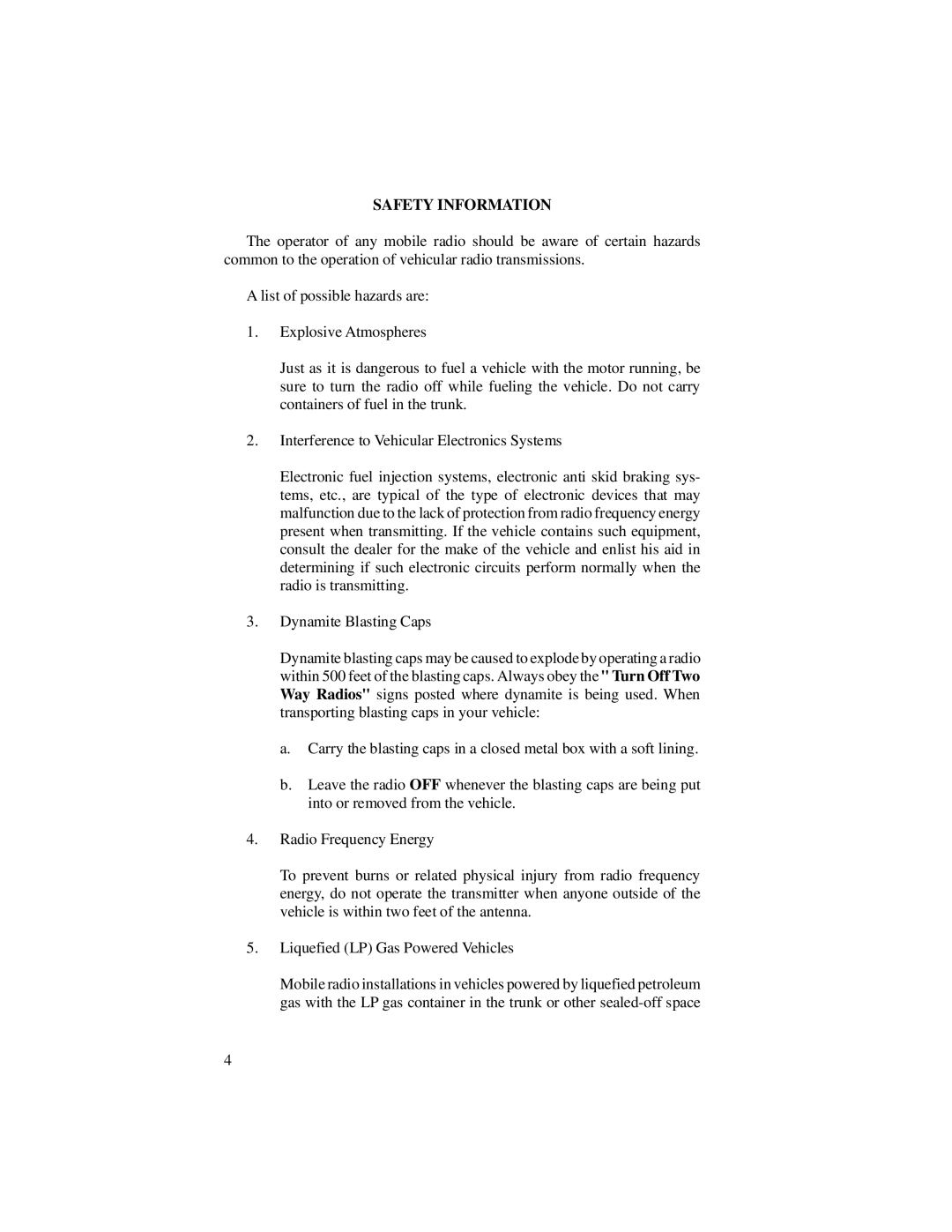SAFETY INFORMATION
The operator of any mobile radio should be aware of certain hazards common to the operation of vehicular radio transmissions.
A list of possible hazards are:
1.Explosive Atmospheres
Just as it is dangerous to fuel a vehicle with the motor running, be sure to turn the radio off while fueling the vehicle. Do not carry containers of fuel in the trunk.
2.Interference to Vehicular Electronics Systems
Electronic fuel injection systems, electronic anti skid braking sys- tems, etc., are typical of the type of electronic devices that may malfunction due to the lack of protection from radio frequency energy present when transmitting. If the vehicle contains such equipment, consult the dealer for the make of the vehicle and enlist his aid in determining if such electronic circuits perform normally when the radio is transmitting.
3.Dynamite Blasting Caps
Dynamite blasting caps may be caused to explode by operating a radio within 500 feet of the blasting caps. Always obey the " Turn Off Two Way Radios" signs posted where dynamite is being used. When transporting blasting caps in your vehicle:
a.Carry the blasting caps in a closed metal box with a soft lining.
b.Leave the radio OFF whenever the blasting caps are being put into or removed from the vehicle.
4.Radio Frequency Energy
To prevent burns or related physical injury from radio frequency energy, do not operate the transmitter when anyone outside of the vehicle is within two feet of the antenna.
5.Liquefied (LP) Gas Powered Vehicles
Mobile radio installations in vehicles powered by liquefied petroleum gas with the LP gas container in the trunk or other
4
